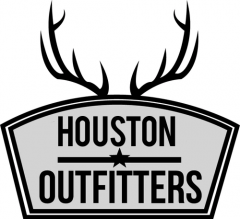Selecting the best site for turkey hunting means finding good terrain and then thinking like a turkey.
Although public wildlife areas also offer good hunting, the type of terrain that holds plenty of gobblers may be on privately owned land. Turkeys will be plentiful in places that offer plenty of cover and food, along with comfortable lanes for strutting. Hunters should ask permission of the landowners well in advance of the season. While hunting on private land, it is absolutely necessary to respect the land and the landowner’s wishes. It may seem that this goes without saying, but many landowners have recalled hunting privileges after finding trash or destruction on their properties.
One bad experience may be enough to convince a landowner to stop allowing hunters onto his property for good. Some public areas offer turkey hunting as well, but there may be a lottery held to determine access. Checking with state departments of wildlife and recreation lets hunters know how and when to enter lotteries and where hunting is permitted. Hunters must be properly licensed whether hunting on private or public land. Once permissions have been obtained, hunters can start getting ready for the season in earnest. Scouting the territory saves time and error. Hunters can decide well in advance where they plan to set up.
Think Like a Turkey
So, how does a turkey think? A better question might be, what does a turkey think about? A hen turkey in spring thinks about getting plenty to eat while keeping reasonably close to cover. If there was a good mast crop on the property last fall, there may still be quantities of acorns on the ground, and these will attract the hens. If acorns aren’t abundant, the hens will move to warm, south-facing slopes and areas where they can find bugs. Turkey thought: “I’m hungry. Where can I find food and still feel safe?”
Early in the season, males are still feeding. However, once breeding season arrives, gobblers are after the hens, so they will go wherever hens congregate. They are also on the alert for rivals, so they will be drawn in by jakes or competing gobblers. During the breeding season, toms will strut along quiet back roads. Turkey thought: “I’m Cock of the Walk, and all these hens are mine!” Staking out logging roads that are near turkey food and the cover is a good way to determine where the toms are coming from and which way they go.
Turkeys are creatures of habit. Once they have established routines, they tend to stick to those routines. When hunters spend some time before opening day glassing the birds, listening for their calls, and looking for signs, they build up a picture of the birds’ activity on that property. Then, even if opening-day weather is less than ideal and the birds aren’t making much noise, it’s still likely that they will appear in their usual places at their usual times. Turkey thought: “It’s time to leave the roost, move down my usual corridor, and feed in my usual spot.”
Outsmart The Birds and Get the Shots
Surely a quick-witted hunter can outsmart a mere bird. However, tasty turkeys have developed wiles that make for challenging hunts. Countless men and women have sat, motionless, in camouflaged vantage points and watched as turkeys strutted about just out of range. When turkeys do move in and engage with the decoys, they have a maddening tendency to bunch up and prevent the hunter from getting a clear shot at just one bird. Planning ahead allows hunters to stay a few steps ahead and be ready and waiting when the big birds appear.
